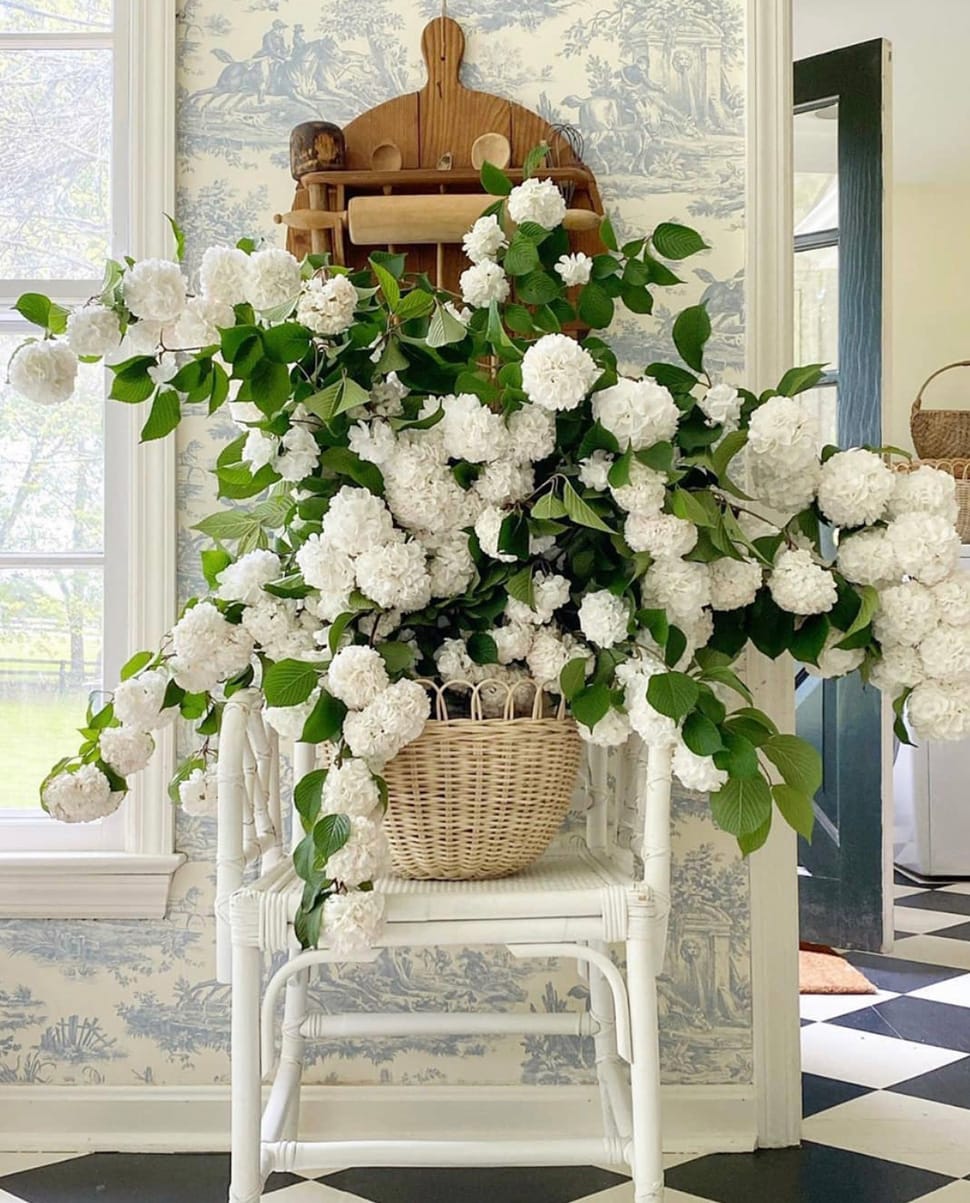
Photo Credit: Instagram @nateberkus
Attempt to bring the outdoors in. Bringing fresh flowers and houseplants into a home not only lifts the spirits, but it also improves the air quality in your space. Ferns and palms have been proven to absorb toxins in the air.
Natural light energizes a room and does wonders for one’s mood. I’m an advocate for increasing window size if renovating or building; however, be aware there are some windows that are more energy-efficient than others. For instance, single-pane windows are less efficient than double- or triple-pane windows, which have layers of glass with inert gases filling the air space to reduce heat transfer and improve sound insulation. I recently installed windows with a low-emissivity (low-E) coating to help regulate indoor temperature and reflect damaging ultraviolet light to keep art, fabrics and furniture from fading.
And, always look for Energy Star products.

Photo Credit: instagram @archdigest
Natural floor choices like wood, ceramic or stone tile emit no VOCs (Volatile Organic Compounds) into the air. Try to avoid vinyl laminates that may contain toxic plastics.
Just as we are mindful not to ingest toxins and GMOs in our foods, we need to be aware of toxins underfoot.
In enclosed spaces like our homes, chemical concentrations are higher and can be damaging to our health over time. Be cautious of artificial fibered rugs and carpets that are constructed of synthetic materials, and consider choosing wool, cotton or natural fibers such as jute, sisal, hemp, coir or seagrass instead. All can offer a timeless look for your home. When buying carpet, select products that are certified as safe by the Carpet and Rug Institute (CRI). If getting rid of old carpet, find a carpet reclamation partner in your area through the Carpet America Recovery Effort (CARE), whose goal is to keep carpet out of landfills.

Photo Credit: Instagram @atlasconcordeus

Photo Credit: Instagram @ashleytstark

Photo Credit: Instagram @William_Mclure
When purchasing paints, look for low or no-VOC products. VOCs can be released for years after application. Avoid other chemical content as well, such as formaldehyde. A good alternative is latex paints, which have a short drying time and are generally non-toxic.
Brushes and equipment can also be cleaned with soap and water, unlike alkyd (oilbased) paint that requires chemical solvents for cleaning. This option is toxic and can be combustible. Look instead for Green Seal Certified paints.

Photo Credit: Instagram @christianladdinteriors
Wall coverings are now made from environmentally friendly fibers like recycled paper, corks, grass cloths and wood paneling. Some printed wallpapers further use water-based or vegetable dye inks.
Solvent-free adhesives are accessible for hanging the coverings, while some are prepasted for easy application.

Photo Credit: Instagram @markdsikes_interiors
Try to choose natural textiles, especially for furniture upholstery, pillows and bedding. Inquire whether the new sofa you are purchasing contains petroleum based materials, and be cognizant that flame-retardant often means soaked in VOCs.
You really can't go wrong with wool, which is hypoallergenic, biodegradable, dust mite-resistant and a naturally fire-resistant fiber. Beautiful textiles are also printed on natural cottons and woven out of linen. Lush velvets can be made of linen, mohair or wool. Try to avoid rayon and other heavily processed synthetics, especially when it comes to sheets that you sleep on every night. Healthy pillows can be filled with organic cotton, pure wool, buckwheat, natural latex, hemp or Kapok which has been compared to goose down.

Photo Credit: Instagram @danawolterinteriors
As for the mattress, while purchasing a natural latex mattress for you and your family is an investment, we inhale whatever materials are in our mattresses and pillows. If an organic mattress is not in the budget, rubber-latex mattress pads or organic wool toppers are a comfortable, and serve as a buffer from potentially harmful chemicals. And, mattresses stuffed with a blend of natural and synthetic latex are a less expensive alternative.

Photo Credit: Instagram @katieridderinc
One way to add character to your home is to repurpose old pieces. Antique malls, fleamarkets, thrift shops and estate sales are fun ways to find unique pieces. I especially love finding crown moldings, uniques doors and hardware from architectural element “graveyards”. An antique armoire not only adds warmth and visual interest to this bedroom pictured, but it also provides convenient storage.

Photo Credit: Instagram @James_michael_howard
If building, consider building smaller, and design multipurpose spaces. Try to save your surrounding trees and investigate eco-friendly roofing materials like terra cotta tiles, cedar shake or slate that hold less heat in the day to cool faster at night.
Recycling is also a simple starting point. Begin educating yourself about healthy household cleaning products, as well.
Creating a healthy home is like making changes to your diet and is best done slowly and with intention. And remember, no change is too small when it comes to your health and the health of your family.

Photo Credit: Instagram @schumacher1889
Natural Style: Decorating with an Earth-friendly Point of View by Janet Sobesky
Clean Mama's Guide to a Healthy Home: The Simple, Room-By-Room Plan for a Natural Home by Becky Rapinchuk
The Modern Organic Home: 100+ DIY Cleaning Products, Organization Tips, and Household Hacks by Natalie Wise



